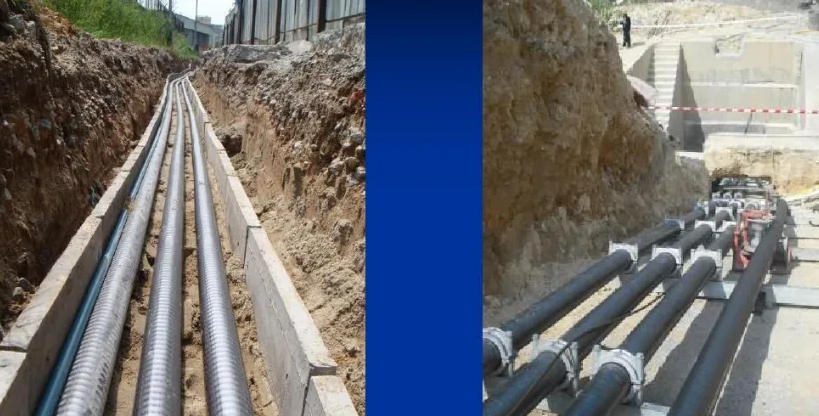In the process of cable installation and use, serious safety hazards are often caused by improper handling of some details. These mistakes often seem insignificant, but once an accident occurs, the consequences can be catastrophic. Below, the editor will summarize several common mistakes and dangers in cable use and installation, and analyze the dangers that these mistakes may cause.

Improper cable crossing
During the cable laying process, cables of different voltage levels sometimes cross each other. If effective isolation measures are not taken at the intersection, the electric field coupling between the two cables may cause the insulation layer of the low-voltage cable to age faster, and may even cause serious accidents such as arc discharge or short circuit. To avoid this, install insulating partitions or protective tubes near the intersection to reduce the risk.
Lack of proper thermal pipeline isolation
If the distance between the cable and the thermal pipeline is insufficient, especially in the absence of thermal insulation measures, the insulation material of the cable may age due to heat, which will lead to a decrease in the insulation performance of the cable and increase the risk of leakage and short circuit.
Therefore, when the cable is laid parallel or crosswise with the thermal pipeline, the minimum safety distance must be guaranteed and necessary insulation measures must be taken, such as using insulation boards or special insulation sleeves.
Insufficient distance from the building foundation
When the cable is laid near the building, if the distance from the building foundation is insufficient, the cable may be damaged due to building settlement or foundation displacement, resulting in insulation cracking or cable breakage. Especially when the cable is introduced into the building, if the protective tube is not put on in time, the safety of the cable will be greatly reduced.
Insufficient buried cable depth
If the laying depth of the buried cable is insufficient, the cable may be exposed to the frozen soil layer or other potential physical damage, which may cause power outages or short circuit accidents. According to the standard, the depth of the buried cable should not be less than 0.7 meters, and it should be ensured that it is buried below the frozen soil layer to prevent the cable from being affected by ground frost heave or other soil changes.
Improper selection of cable protective sleeves
Improper selection of the material of the cable protective sleeves or poor installation quality of the protective sleeves may cause the cables to be damaged by the external environment during operation.
For example, protective tubes made of materials with poor corrosion resistance or insufficient mechanical strength will age or break due to environmental factors, and lose their protective effect on the cable.
Therefore, when selecting cable protective tubes, materials with good insulation, corrosion resistance, and high compressive strength, such as polyethylene (PE) or high-quality steel pipes, should be given priority, and their installation firmness and sealing should be ensured.
The correct installation and use of cables are essential to ensure the safe and stable operation of power systems. Although these common errors seem minor in actual operation, once ignored, they will greatly increase the risk of electrical accidents.
Therefore, we remind everyone that during the installation and use of cables, they must strictly follow the relevant specifications to avoid unnecessary dangers due to negligence in details.
Post time: 2024-09-18





